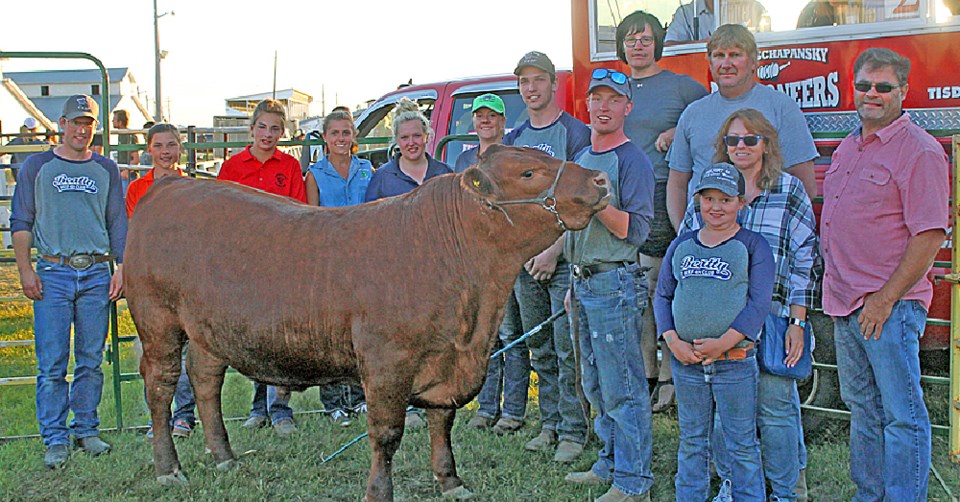MELFORT — This year’s 4-H Regional Melfort Beef Show and Sale raised almost $20,000 to support the Pediatric Epilepsy Program of Saskatchewan.
The money is going through the Jim Pattison Children’s Hospital Foundation.
“This year our club decided to do the Jim Pattison Children’s Hospital Foundation mainly because of my daughter,” said Michael Spratt, assistant leader of the Beatty Beef 4-H Club and chairman of the Melfort Regional Show Committee. “She’s a member of our 4-H Club and she has epilepsy, so we thought it would be good to give back and the money is going to fund epilepsy research.”
The charity steer, Kit-Kat, weighed 1,464 pounds and was a Red Angus breed.
“We are only one of two provinces that do not have a dedicated child and maternal hospital, and we’re about right now 87 per cent complete and we are hoping to be open fall 2019,” said Stacie Lawson, manager of development and engagement at the Jim Pattison Children’s Hospital Foundation. “It’s really good to get rural Saskatchewan on board. Rural Saskatchewan is where our kids are going to come from that’s going to utilize the hospital.”
Cody Fettes of the Beatty Beef 4-H Club was the one who raised Kit-Kat. Fettes has been in 4-H for 15 years.
“It was my last year at 4-H so I figured I might as well do something nice,” Fettes said. “I have my own full-time job; these kids are trying to raise money for school. I didn’t think I should steal a steer buyer from one of the kids when they’re trying to still pay for university.”
Raising one of these steers can cost about $700 in feed, plus the price of the animal.
Sometimes there are tears in the children’s eyes, selling the steer they raised to be slaughtered.
“When I was younger I know I took it a lot harder than I do now,” Fettes said. “Now I’ve done it for so long. It’s just something you do in the cattle industry, you got to get used to it. I have my own herd now and I got to do it once a year now – it’s just part of the business.”




